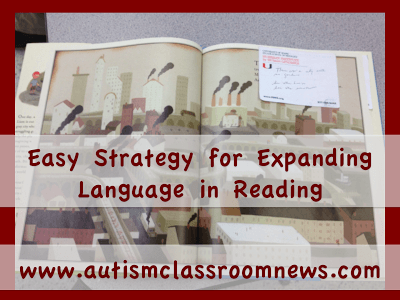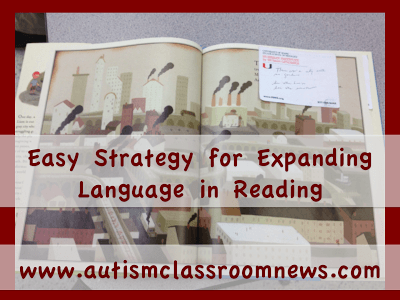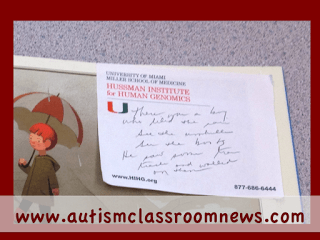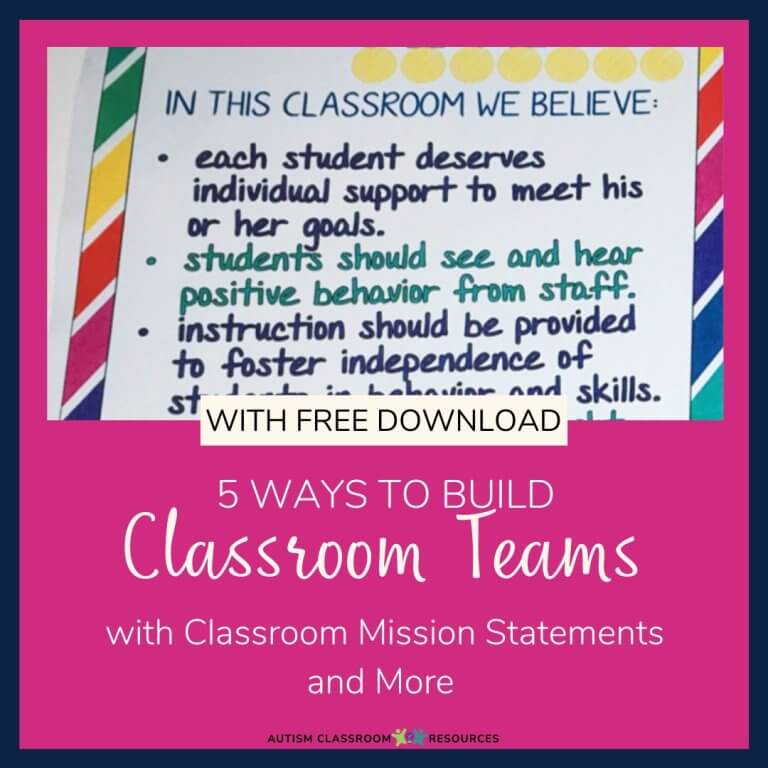Sharing is caring!
 Let’s face it, you can’t do everything. Yeah, I know that’s a big surprise. But it’s true nonetheless. As a teacher, I think that is even harder to swallow because you know what the kids need, but translating that to other adults in the room isn’t always a piece of cake. I gets lots of requests to write about how to manage a classroom with limited staff or with a number of students and, even with lots of paras, how to give direction and organize the room. Unfortunately I don’t have a magic answer or a way to create more support if the infrastructure of support isn’t there. If I did, trust me, I’d travel to a lot more districts!
Let’s face it, you can’t do everything. Yeah, I know that’s a big surprise. But it’s true nonetheless. As a teacher, I think that is even harder to swallow because you know what the kids need, but translating that to other adults in the room isn’t always a piece of cake. I gets lots of requests to write about how to manage a classroom with limited staff or with a number of students and, even with lots of paras, how to give direction and organize the room. Unfortunately I don’t have a magic answer or a way to create more support if the infrastructure of support isn’t there. If I did, trust me, I’d travel to a lot more districts!
What I do have are some tips and tricks I’ve picked up (and developed) over the years to help support your staff and make the most of the support you have in your classroom. I’ve talked about the importance of a good zoning plan in the past as a tool for organizing your staff. The zoning plan tells staff WHAT to do, but it doesn’t necessarily tell them how to do it. They still need instruction and support on how to do it. So I wanted to focus on one small trick (and maybe everyone knows it but me) that I thought was a great idea to make sure that a read-aloud activity run by a paraprofessional (or even possibly a peer mentor) is conducted in the way you want to encourage language and participation in the activity.
Reading is about so much more than reading the story. Yes I realize this is evident, I hope, to most teachers. However, that doesn’t mean it is evident to everyone in your room that you supervise. It is about language, about inference, about understanding what is read, about finding things in the pictures, etc. When I started out working in preschool classrooms I was fresh out of undergrad and working on my doctoral degree. I had no children and no nieces and nephews. I had done my share of babysitting and community service with kids in college, but it wasn’t always a skill that came naturally to me. This is not an unusual time of life for someone to take on a paraprofessional position. What this means is that this person may not be a natural at reading to young children (or even older children). I know I wasn’t. I still don’t consider it to be my strongest area but hopefully my skills have improved over the years.
So, when I was running a classroom with a speech colleague a while back, she had a trick that I immediately snapped a photo of to share with others. Post it notes. Yep, in your lesson planning, write the particular things you want someone to focus on in a reading activity on a post-it note and stick it to the page.
Things you can include on a post-it:
-
-
- a list of questions you want the person to ask the child/children,
- reminders like “ask the kids to find ___ in the picture”
- alternate text you want them to read
- a way to simplify the text on the page, or
- adding text to the text on the page
So, it’s so simple I have no idea why I never thought of it
myself. It would help me greatly when I have thought about what I want to do with a text, but unfortunately that no longer sticks in my memory as well as it did (which I am convinced keeps Post-Its in business). I’m sure I’m not the first to share this, but if you haven’t thought about it, hopefully it will be helpful.What other strategies do you have to share to help staff in the classroom implement instruction while the teacher is engaged with other students? Please sound off in the comments.
-





![Summer resources to help survive the end of the year in special education [picture-interactive books with summer themes]](https://autismclassroomresources.com/wp-content/uploads/2018/05/SUMMER-RESOURCES-ROUNDUP-FEATURE-8528-768x768.jpg)




